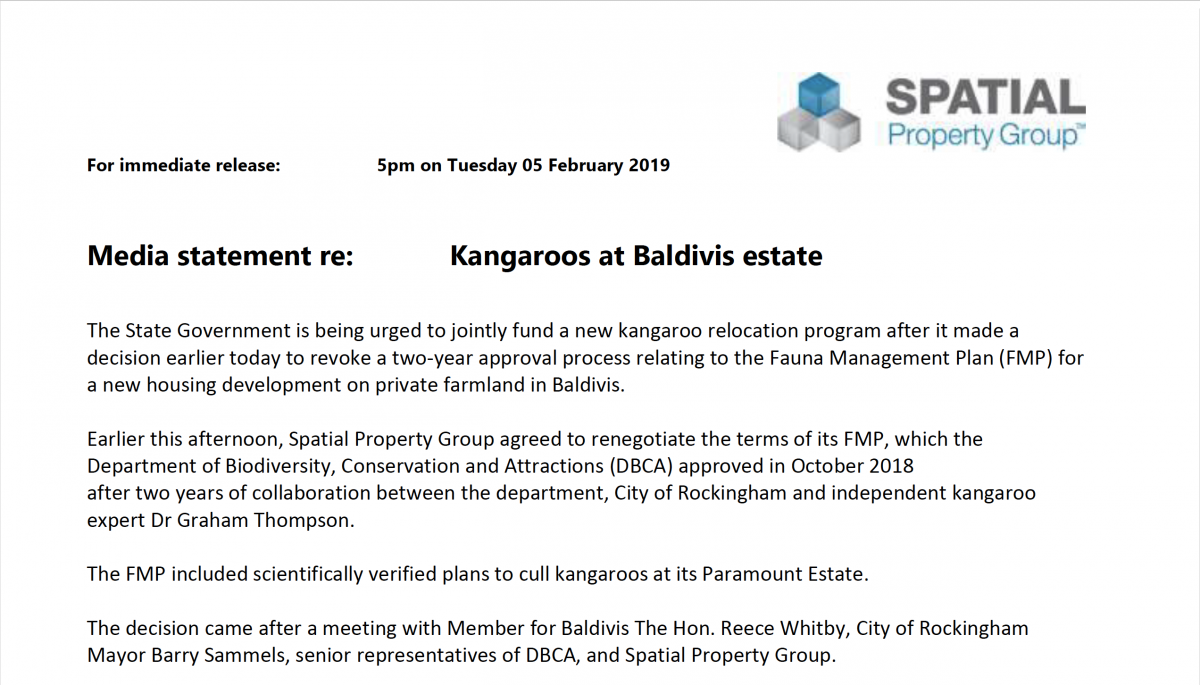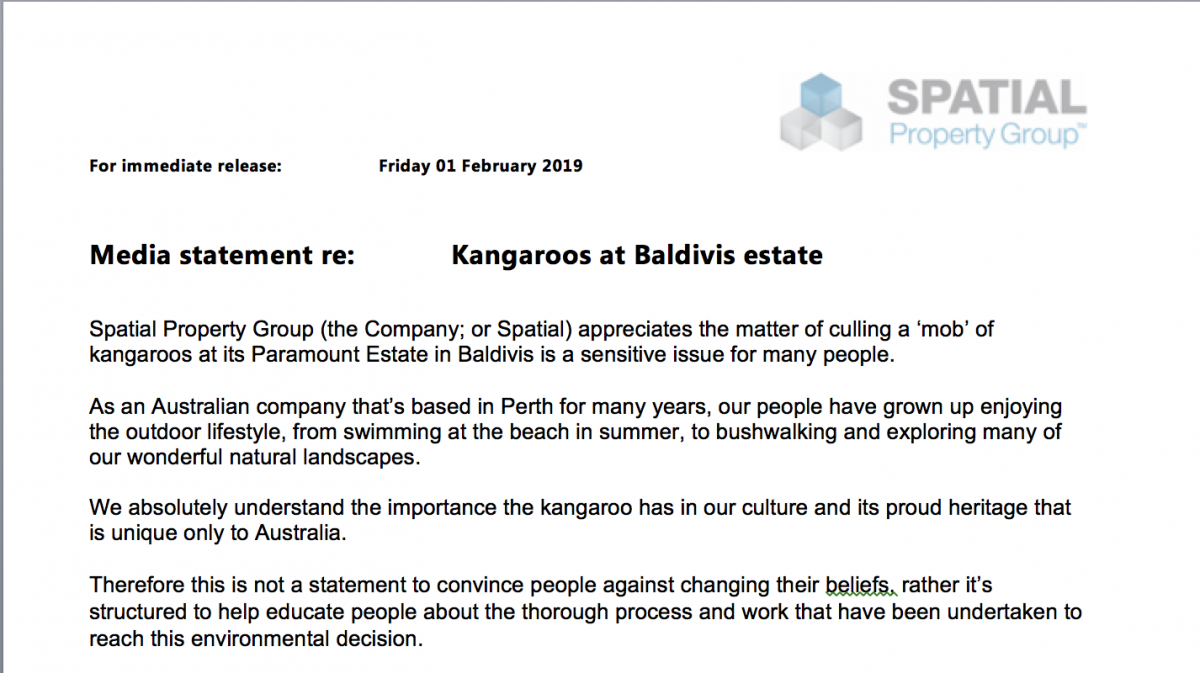The State Government is being urged to jointly fund a new kangaroo relocation program after it made a decision earlier today to revoke a two-year approval process relating to the Fauna Management Plan (FMP) for a new housing development on private farmland in Baldivis.
Earlier this afternoon, Spatial Property Group agreed to renegotiate the terms of its FMP, which the Department of Biodiversity, Conservation and Attractions (DBCA) approved in October 2018 after two years of collaboration between the department, City of Rockingham and independent kangaroo expert Dr Graham Thompson.
The FMP included scientifically verified plans to cull kangaroos at its Paramount Estate.
The decision came after a meeting with Member for Baldivis The Hon. Reece Whitby, City of Rockingham, Mayor Barry Sammels, senior representatives of DBCA, and Spatial Property Group.
Spatial Property Group Managing Director Bruce Young said the Company has always been and remains committed to working closely with government to identify appropriate flora and fauna solutions.
“We absolutely understand the community concerns and throughout the process we’ve been steadfast in our position on the connection Australians have with kangaroos,” Mr Young said.
“We’re happy to look at adapting the terms of the FMP, however it is frustrating that after working with the relevant departments for two years to gain approvals for this development, and investing considerable funds into that process, the decision has been changed again.
“Darting and relocating kangaroos has been scientifically verified as a high-risk and expensive operation with many unknowns in terms of the animals mid to long-term wellbeing.
“But if that is the solution that the government now deems most appropriate, we would like to gather more scientific data by monitoring the kangaroos after they have been relocated. We hope that data can then be used to inform future land development projects in WA and elsewhere.
“We have always taken a proactive approach to be responsible for managing the animals on our land and worked through two years of guidelines and liaison with the DBCA to successfully secure approval.
“Given this late change that has overridden the stipulated guidelines clearly set out for industry, we believe it’s only reasonable that the government contributes financially to the new solution.”









